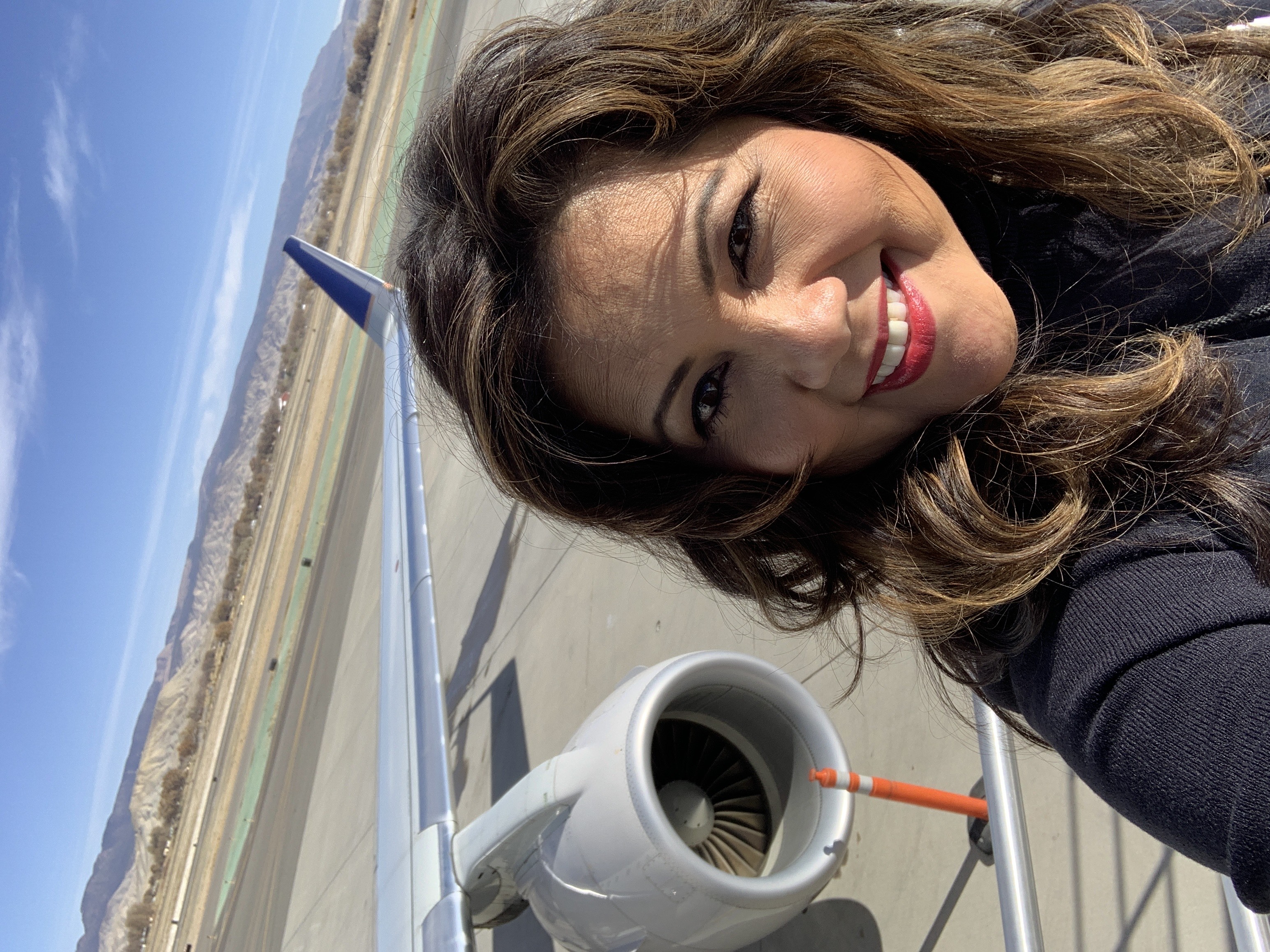
Image courtesy of Aman Tokyo
Japan takes everything to an entirely new level. It takes good things — sushi, art, design, pizza, hospitality, coffee, shopping — and makes them great. Even the country’s 7/11’s are immaculate, and make perfect settings for a quick, gourmet meal — not an oxymoron.
Japan has always been popular, and in the last couple years, the country has been incubating. A slate of new luxury hotels and developments has popped up in Tokyo, in particular. While foreigners were temporarily denied entry, the city kept getting better and better (as if Tokyo weren’t an incredible destination already).
Meander around the city’s numerous parks (Imperial Palace Park is particularly inviting), partake in a traditional Japanese tea ceremony, sample the city’s slew of exceptional dining outlets — from holes-in-the-wall to Michelin-Starred destination restaurants — and peruse its eclectic selection of boutiques, department stores, shopping arcades and megastores. Tokyo is where you can experience something unlike you’ve ever had, where you’ll feel like a fish out of water — all while being extremely safe. Its uniqueness, energy, predilection for optimization and technological innovation never fail to captivate. There’s a reason the country tops many a bucket list.
Below is just an introduction to some of my favorite Tokyo neighborhoods, each of which has its own distinct personality. Of course, when you connect with me, we’ll work together to design your dream trip. Plus, I’ll unlock VIP perks at the city’s best hotels. And when it comes to hospitality, the Japanese more than deliver.
Ready for the trip of a lifetime? Connect with me, and I'll design your dream Tokyo vacation.
The quick and dirty:
Currency: ¥, Japanese yen (JPY)
Language: Japanese
Airports: Haneda Airport (HND), Narita International Airport (NRT)
Public transportation: exquisite, clean and highly efficient; there are both above-ground (Japan Rail East) and underground (the Tokyo Metro, Toei Transportation) options
Private transportation: there are plenty of taxis in Tokyo, many with English signage, but the public transportation cannot be beat, and comes highly recommended
Best time to visit: late March through early April for the cherry blossoms (if you don’t mind the crowds), and September through November for crisp autumnal weather (a fair warning: autumn is also typhoon season, so expect the occasional downpour)
Ideal length of stay: 5-7 days is ideal to get a thorough taste of all Tokyo offers, but if the city is one stop on a longer Japan trip, you can get by with three solid days
Signature dishes: sushi & sashimi, yaki-tori (grilled chicken or veggie skewers), ramen, tempura, tonkatsu (breaded and deep-fried pork), shabu-shabu (beef hot pot)
Key phrases: konnichiwa (kohn-nee-chee-wah, hello), arigatou gozaimasu (ah-ree-gah-toh goh-zah-ee-mahs, thank you), sumimasen (soo-mee-mah-sen, excuse me/pardon me), kudasai (koo-dah-sigh, please)
Dress code: light layers, fashionable tennies & and your favorite statement piece
Shibuya & Shinjuku
No trip to Tokyo would be complete without visiting the energetic, bustling, efficiently hectic Shibuya and Shinjuku neighborhoods. The former is home to Shibuya Scramble Crossing, the city’s busiest intersection and a bucket-list tourist experience worth the photo op. Shibuya is also very artistic and hip. It caters to a young, fashion-forward crowd and is filled with delicious, inexpensive places to eat, plus lots of charming record shops and small movie theaters. The skyscraper-filled Shinjuku becomes a neon nightlife hotspot at night. Its numerous ramen shops and welcoming izakaya (Japanese pubs) will keep you going. Plus, Shinjuku’s Kabukicho district is prime for bar-hopping and late-night adventures.
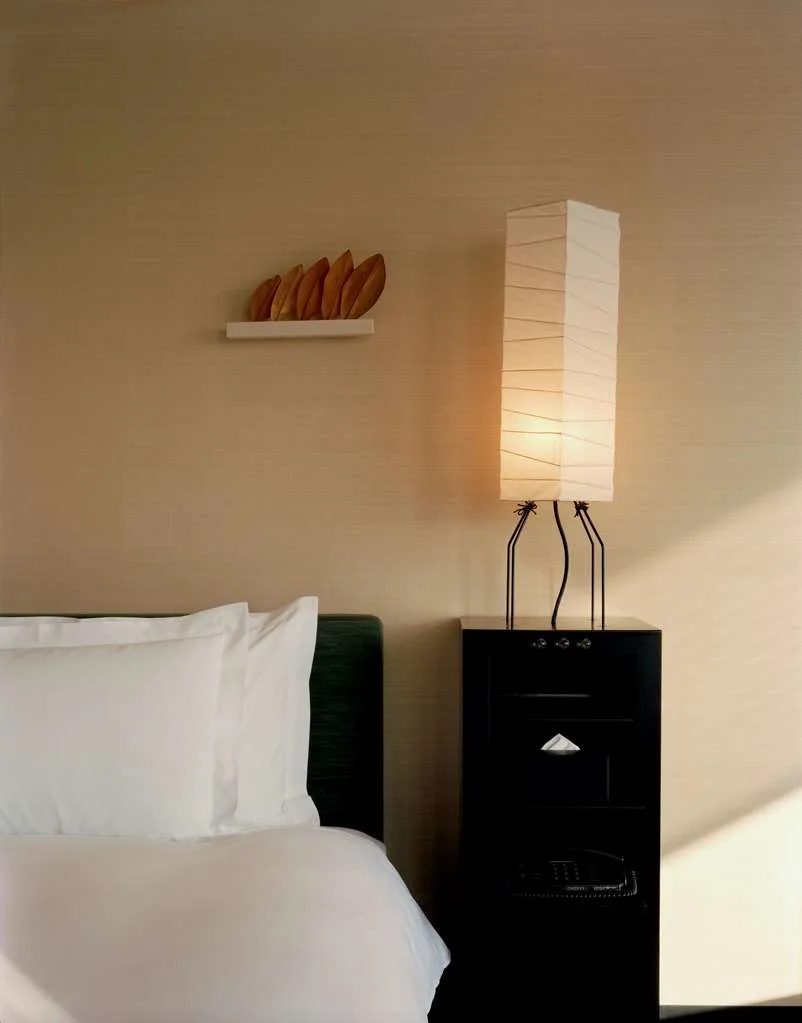
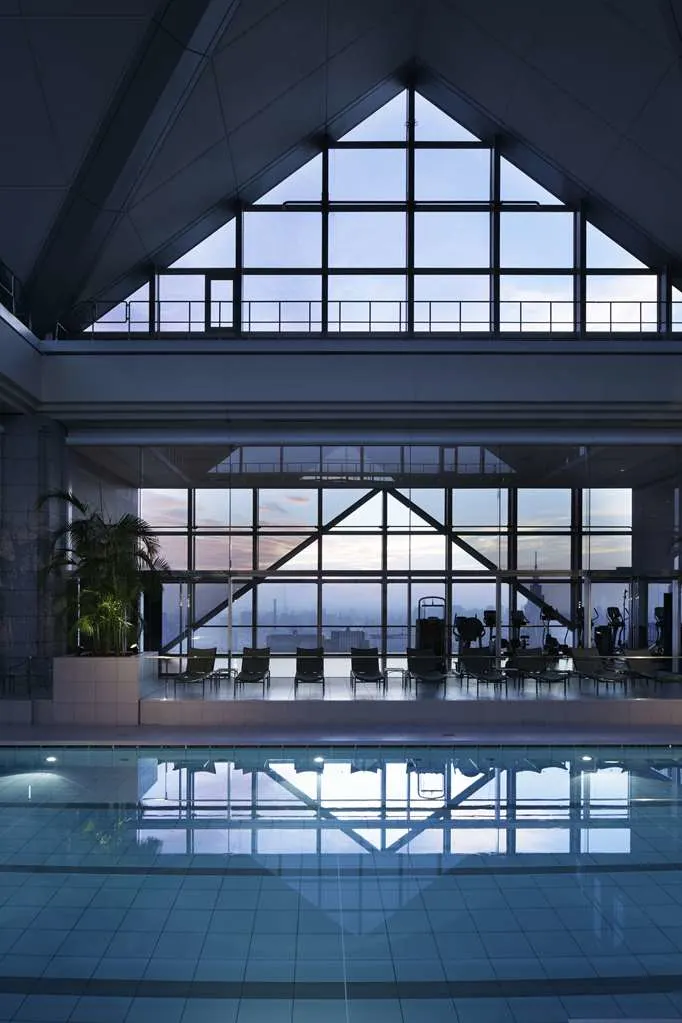
Images courtesy of Park Hyatt Tokyo
Where to stay in Shibuya & Shinjuku
Park Hyatt Tokyo: Serene elegance in Tokyo’s urban center. Book with me to receive VIP Hyatt Privé perks, including $100 hotel credit, a welcome amenity, daily breakfast for two, an upgrade & extended check-in/out. (Pro tip: the hotel's New York Bar, on the 52nd floor, is prime for cocktails and live jazz with a view.)
Trunk Hotel Yoyogi Park: A 25-room boutique gem with a soothing wellness vibe. Connect with me to see how I can level up your stay.
Kimpton Shinjuku Tokyo: A tasteful, vibrant stay with a top-tier concierge, an approachable price point and a deep connection to its energetic locale. Even better, I'll get you exclusive perks like $100 hotel credit, welcome amenities, daily breakfast for two, an upgrade & late check-out.
What to do in Shibuya & Shinjuku
Take in the panoramic city views from one of the Tokyo Metropolitan Government Office Building’s free observation decks. Meander around the various types of gardens in the Shinjuku Gyoen National Garden, among the city’s largest parks.
Where to eat in Shibuya & Shinjuku
Grab a coffee at the hip About Life Coffee Brewers, a small but mighty neighborhood hotspot, or at Fuglen, where Scandinavian and Japanese aesthetics combine to glorious effect. For a three-Michelin-Starred bucket-list kaiseki experience (a traditional multi-course meal), head to Kagurazaka Ishikawa, where the finest ingredients take center stage. Expect masterful presentations of seafood, rice and locally sourced vegetables. For something super casual (and super delicious), opt for the homemade udon noodles at the teensy Udon Shin. You can choose from both cold and warm combinations (hemp and chili oil, warm soy sauce and pickled egg), plus a variety of toppings (grated radish, Japanese parsley, meyer lemon, cod roe...).
Shimokitazawa (a.k.a. Shimokita)
This young neighborhood is effortlessly cool, and exudes a laid-back bohemian vibe. Here is where to go for some of Tokyo’s best vintage shopping, paired with a delightful café culture.
What to do in Shimokitazawa
Vintage shop at New York Joe Exchange, a former public bath house, and hunt for records at Pianola Records, whose eclectic selection of musical gems awaits. Check out the work of newly emerging artists at Gallery Hana, and the various restaurants, cafés and shops at the trendy Mikan Shimokita and Reload complexes.
Where to eat in Shimokitazawa
I love Andon for masterful rice balls, oden (one-pot soups), porridge and desserts in a cool, local setting. Head to Shirubee, a welcoming izakaya, for local pub vibes, and Curry Spice Gelateria KALPASI for comforting, colorful meals topped off with incredible homemade gelato in creative flavors (chocolate with sichuan pepper, masala chai, cumin…).
Ginza
Ginza is one of Tokyo’s most glamorous, high-end neighborhoods. The area is filled with luxe department stores that align with Ginza’s overall elegant vibe. In keeping with that theme, you’ll also find lots of high-end dining here: Michelin Stars and gourmet restaurants abound.

Image courtesy of Hyatt Centric Ginza Tokyo
Where to stay in Ginza
Hyatt Centric Ginza Tokyo: Playful, centrally located and filled with art. When you book with me, you'll benefit from Hyatt Privé preferred partner perks, including a welcome amenity, daily breakfast for two, an upgrade & early check-in.
What to do in Ginza
Experience the art of Kabuki — traditional Japanese drama where highly skilled actors sing and dance in elaborate costumes and make-up — at the Kabukiza Theatre. Peruse Ginza’s numerous world-class art museums, including the Shiseido Gallery, for contemporary art and dynamic exhibitions, and Ginza Maison Hermès, for a luxe, exceptionally chic art-gallery/movie-theater/high-end-shopping moment.
Where to eat in Ginza
Don’t miss the homemade sweets, tea curation and tea salon at the beautiful Higashiya Ginza, whose interior is a study in Japanese understated luxury. Also impressive is the elevated Japanese tasting menu at the two-Michelin-Star Ginza Kojyu, and the signature shabu-shabu at the dimly lit Ginza Shabuki, where you and your fellow diners will savor a set or all-you-can-eat meal in a private setting. Hakkoku is a must for elevated sushi, while Star Bar is a world-renowned, swanky bar that uses three types of ice among its expertly crafted drinks.
Nihonbashi
This centrally located, sleek business district is named after its historic bridge (Nihonbashi means “Japan bridge”), which served as the starting point for Japan’s highway network since the early 17th century. A dynamic blend of history (historic department stores, artisanal shops, shrines) and the new (skyscrapers, shops, modern architecture) make this neighborhood unique.

Image courtesy of Mandarin Oriental, Tokyo
Where to stay in Nihonbashi
Mandarin Oriental, Tokyo: Sleek, sophisticated and very stylish, with a must-visit spa to boot. When you book Mandarin Oriental with me, you'll enjoy exclusive Fan Club preferred partner amenities. I'll be pleased to give you more details.
What to do in Nihonbashi
Visit Japan’s oldest department store, Nihombashi Mitsukoshi Main Store, which, in the early 17th century, originally opened as a kimono store. Browse the impressive collection of Japanese art at the Mitsui Memorial Museum of Art, or visit the unique Tako no Hakubutsukan (Kite Museum), where you’ll encounter a private collection of kites, both modern and traditional.
Where to eat in Nihonbashi
Savor innovative dishes at the plant-filled hipster hangout Caveman, as well as French-influenced Japanese fare at the chic Neki. There’s always a line at Kaisendon Tsujihan Nihonbashi, and for good reason: their seafood bowls are the best of the best. Mandarin Oriental's Pizza Bar on 38th serves delicious pies prioritizing organic ingredients (with a stellar view, of course), while Sense, on the 37th floor, serves elevated Cantonese fare. In town, the beautiful Heichan offers a seasonally driven, multi-course tasting menu, while the airy Parklet Bakery makes the best naturally leavened breads, pastries and satisfying bites. To round out the perfect Tokyo evening, grab a nightcap at the intimate Bar High Five, where signature creative cocktails feature ingredients like homemade matcha bitters, seasonal fruits or green tea liqueur.
Minato & Roppongi
Minato is a bustling central hub, home to the famed Tokyo Tower, a red-and-white structure that resembles the Eiffel Tower. Within Minato, you’ll find Roppongi, a sophisticated neighborhood generally considered one of — if not the — best nightlife hubs in Tokyo. It’s also home to several of the city’s best art museums. Despite Roppongi’s high-end reputation, however, its culinary scene offers something for everyone, and for every budget.

Image courtesy of Janu Tokyo
Where to stay in Minato & Roppongi
Janu Tokyo: Aman’s playful, family-friendly, hot-off-the-press little sister in the nearby Azabudai Hills business development. Book with me to receive $100 food / beverage credit, breakfast daily, an upgrade and extended check-in/out.
The Tokyo EDITION, Toranomon: A youthful, chic hotel with an eye for modern design, bringing some color to an otherwise business-focused district of Minato. And when you book with me, you'll receive $100 hotel credit, breakfast daily, an upgrade and extended check-in/out.
Park Hotel Tokyo: A celebration of contemporary Japanese art. Book with me to unlock ¥2,600 food / beverage credit, a complimentary welcome drink, an upgrade and late check-out.
Grand Hyatt Tokyo: Japanese design and spacious rooms directly connected to the Roppongi Hills development. VIP Hyatt Privé perks include $100 hotel credit, a welcome amenity, breakfast daily, an upgrade and extended check-in/out.
Conrad Tokyo: Modern and stylish, with sweeping city views. Book with me to snag Hilton Impresario partner perks including $100 hotel credit, breakfast daily and an upgrade.
Andaz Tokyo Toranomon Hills: A clean Japanese aesthetic with a contemporary twist, plus a collection of Japanese art throughout. Fora partner perks include $100 hotel credit, a welcome amenity, breakfast daily, an upgrade and extended check-in/out.
What to do in Minato & Roppongi
There are two major developments in Roppongi: Roppongi Hills and Tokyo Midtown, where you’ll find a variety of restaurants, museums, shops, hotels and entertainment options, along with residential and office spaces. Highlights include the National Art Center, a glass architectural marvel that exclusively shows temporary exhibitions; the Suntory Museum of Art, which shows both ancient and modern art from several disciplines; and the Mori Art Museum, a multi-genre must with keen eye for the most of-the-moment goings on in art, architecture and design.
Where to eat in Minato & Roppongi
Don’t let the casual atmosphere of Butagumi fool you: the tonkatsu restaurant’s deep-fried pork is legendary. Japan does everything exceptionally well, and that includes pizza. Exhibit A: Savoy Azabu-juban, which cooks its Neapolitan pies (plus other delights) in wood-fired ovens. Exhibit B: Pizza Studio Tamaki, where wood-fired pies are made with meticulously selected ingredients. For a farm-to-table cocktail tasting menu, Gen Yamamoto is a must.
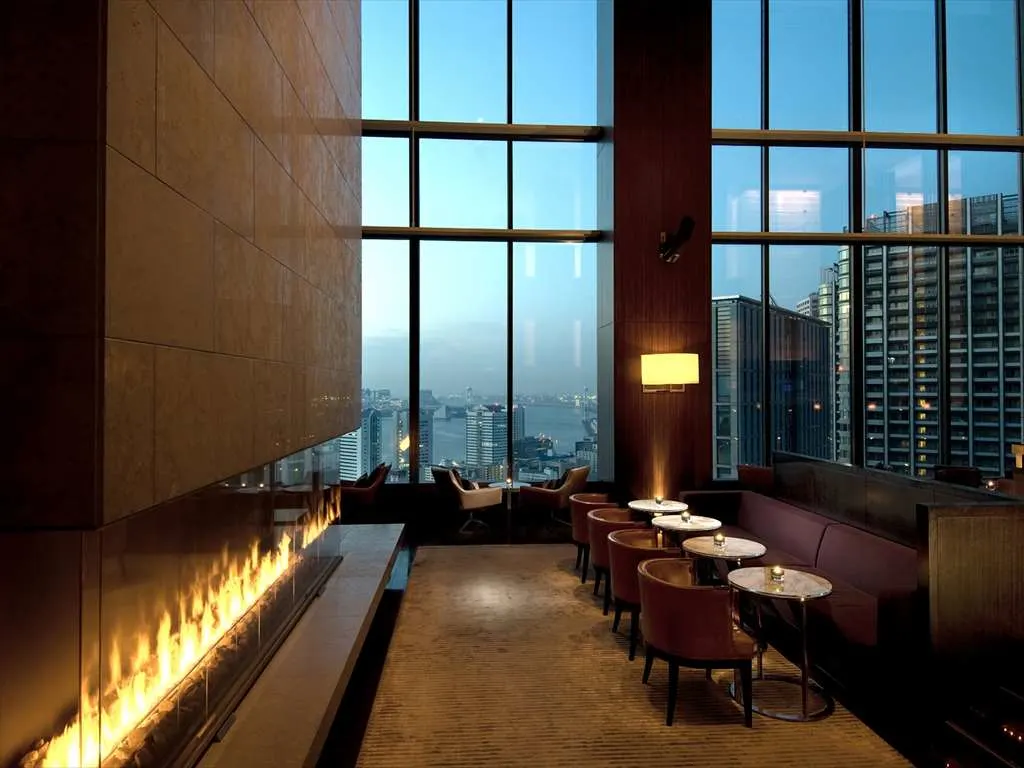
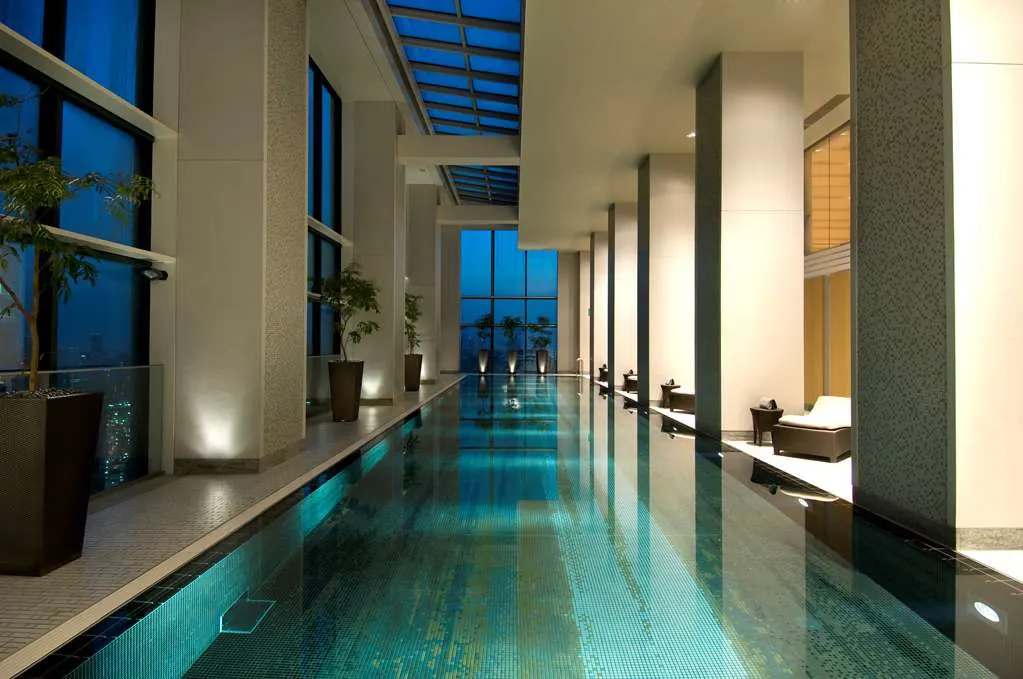
Images courtesy of Conrad Tokyo
Nakameguro
Nakameguro might be best known as the prime location to see Japan’s famed cherry blossoms: the Meguro River, flanked by the pink-hued trees, is certainly a sight to behold during late March and early April. But the area is also worth visiting in its own right. It’s a trendy, hipster enclave that provides a welcome respite from Tokyo’s otherwise hyper-modern, frenetic vibe — which is also amazing, but Nakameguro is a nice, fun and fascinating contrast. It allows you to experience Tokyo’s more laid-back side.
What to do in Nakameguro
Browse the curated selection of books, gifts, magazines and stationery at the Nakameguro Tsutaya Bookstore. Relax in the rooftop Meguro Sky Garden. Explore the many shops and restaurants of Kokashita, a sub-train-track shopping arcade.
Where to eat in Nakameguro
Onibus Coffee Roasters’s Nakameguro location is low-key, high-quality and a master of perfectly executed simplicity. And while it's not technically within the smaller Nakameguro, Mark's Tokyo, in the larger Meguro neighborhood, serves a mouth-watering combination of locally sourced Japanese and Italian fare in a welcoming, chic setting.
Akihabara
Anime enthusiasts, rejoice. Akihabara is the place to go to surround yourself with all things related to Japanese subcultures. Anime is pervasive, and a slate of arcades and electronics stores give the area a lively, fun and playful vibe. And although it’s not in Akihabara, the Ghibli Museum, in Mitaka, is very much worth a visit. Even if you've never seen Spirited Away or other Studio Ghibli films, the museum is a special delight, sure to be among your trip highlights. Pro tip: get tickets in advance.
What to do in Akihabara
Peruse the numerous electronics and games stores. Read comics, watch movies, access the internet and people watch at the area’s 24-hour manga cafés.
Where to eat in Akihabara
Play the food game by ear and head into any one of the numerous manga cafés, ramen stands and themed cafés. One fun option is the Micro Tea Cup Café, a brightly lit spot with lots of pink and puppies. Make reservations in advance.
Tsukiji
Perhaps the biggest reason to visit this neighborhood is for its famous Tsukiji Outer Market. (The inner market relocated to a different neighborhood in 2018.) Get up early, and head to the market for breakfast. Sushi, fish and seafood are the name of the game here, but there are tons of stands and restaurants catering to the less fish-inclined among us. The stalls and bustling energy of the outer market have an air of nostalgia, calling to mind some of Tokyo’s charm from past eras. After a morning spent sampling all the goods, relax in one of the pleasant parks nearby.
What to do in Tsukiji
There’s the fish market, of course, but don’t miss the Buddhist Tsukiji Hongan-ji Temple, whose dynamic architecture takes inspiration from different cultures and traditions around the world.
Where to eat in Tsukiji
For top-tier sushi at the neighborhood’s Outer Market, head to Tsukiji Itadori Bekkan, but you really can’t go wrong with any of the gastronomic stalls and restaurants here. And remember: don’t let size deceive you. The best places to eat in Tokyo, especially in Tsukiji, are often the unassuming holes-in-the-wall.
Chiyoda & Otemachi
Otemachi, located in Tokyo’s most ancient region, is a new business district located within Tokyo’s Chiyoda neighborhood. Otemachi is one of several “cities within a city” that have popped up in recent years. It’s ultra-modern, home to some of the city’s most luxurious hotels, but it nonetheless respects the history of its surroundings.
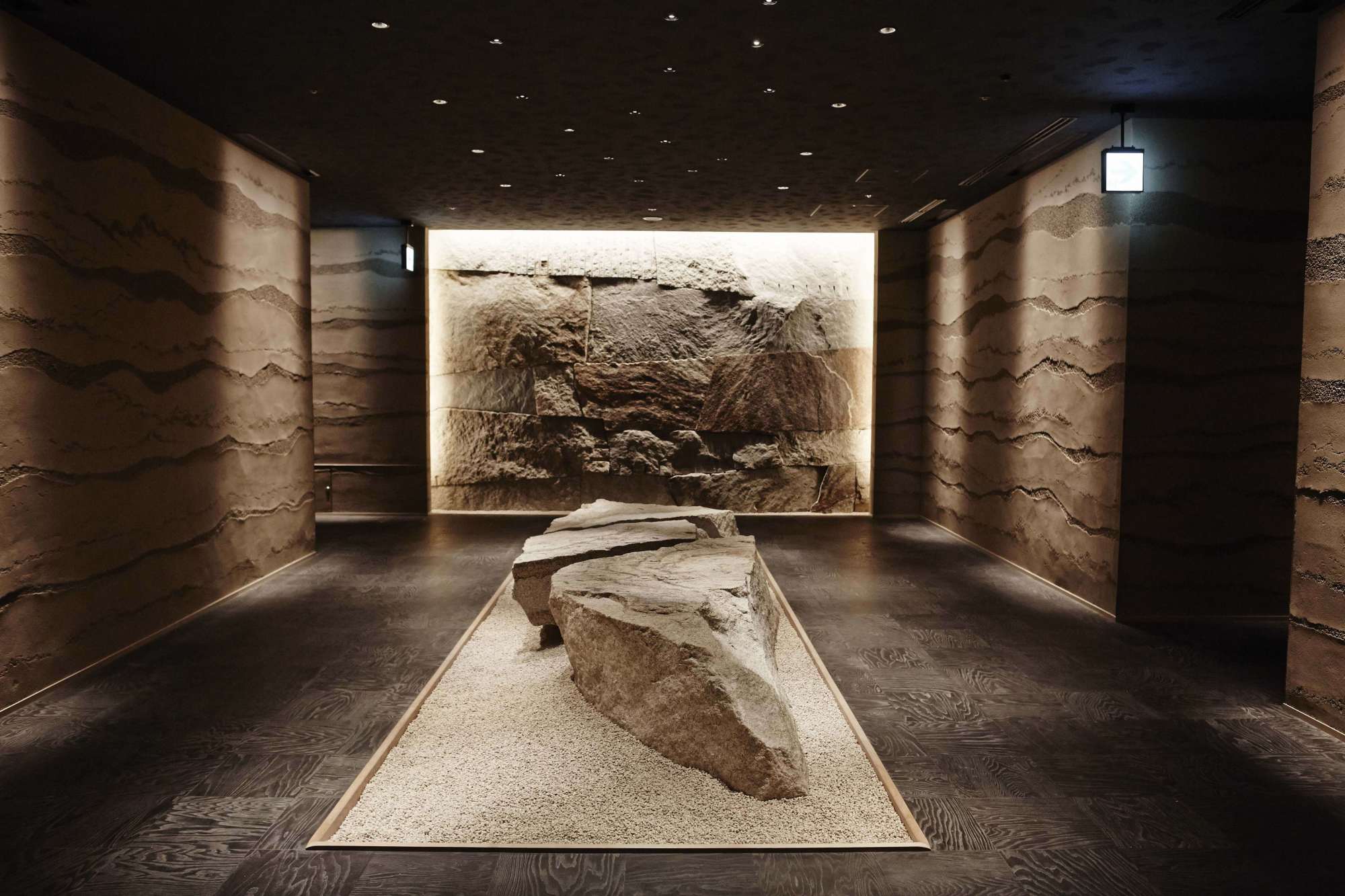
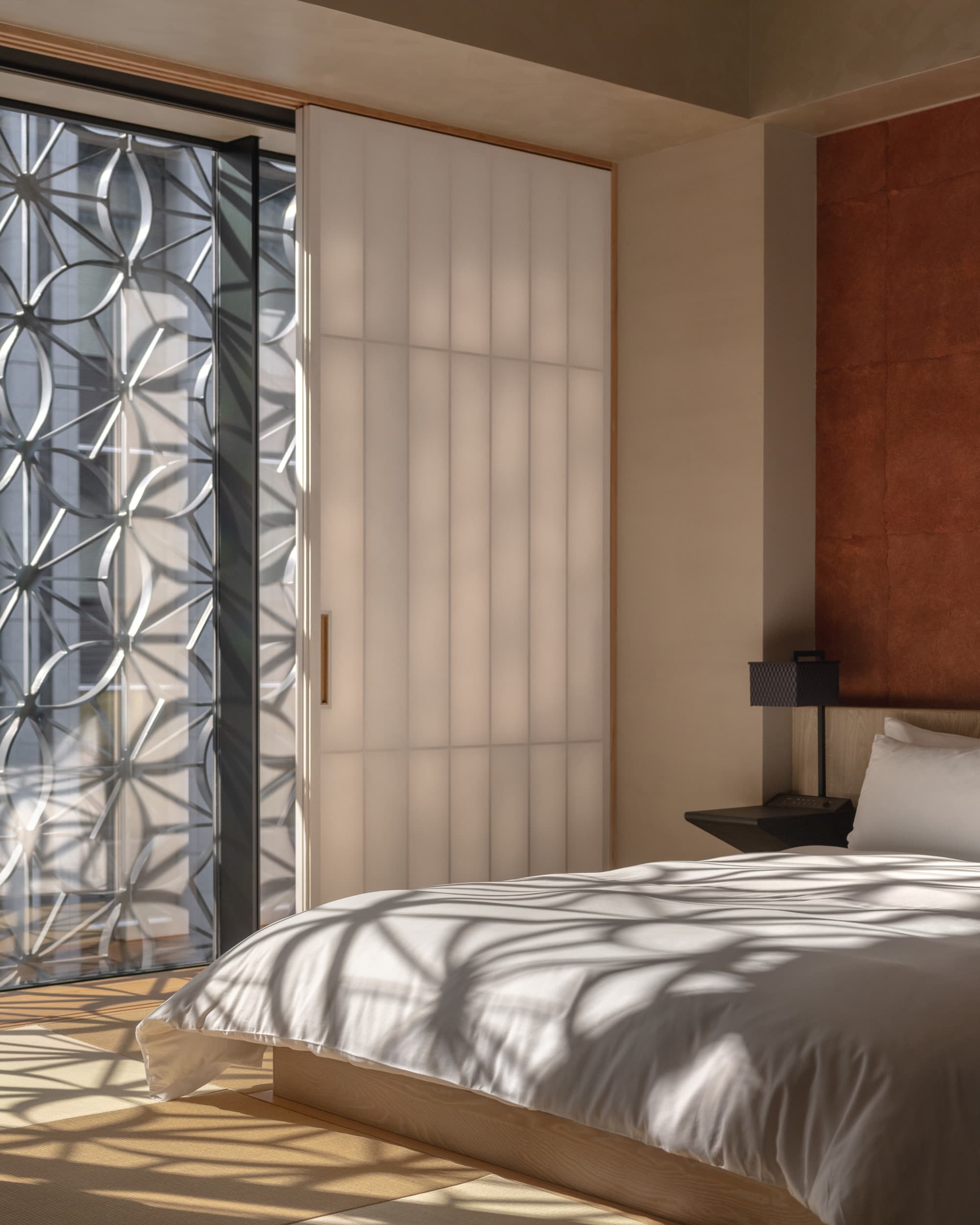
Images courtesy of HOSHINOYA Tokyo
Where to stay in Chiyoda & Otemachi
Aman Tokyo: The brand’s signature minimalism, appealing geometry and heightened luxury feel right at home in Japan’s capital. And when you book with me, you'll receive $100 hotel credit, breakfast daily, an upgrade and extended check-in/out.
Four Seasons Hotel Otemachi: A brand new, delightful stay with a clean Japanese aesthetic and a fantastic, warm staff. When you book Four Seasons with me, you'll enjoy exclusive Four Seasons Preferred Partner amenities. I'll be pleased to give you more details.
Bulgari Hotel Tokyo: A taste of Italy in central Tokyo.
Palace Hotel Tokyo: Nature motifs, stellar views and one of the best hotel welcomes you’ll experience. Fora partner perks include $100 food / beverage credit, breakfast daily, an upgrade and extended check-in/out.
HOSHINOYA Tokyo: A classic ryokan meets modern urbanism.
The Peninsula Tokyo: The brand’s signature five-star amid sophisticated luxury. Book with me to receive VIP PenClub perks, including $100 hotel credit, a welcome amenity, breakfast daily, a guaranteed upgrade at time of booking and check-in/out anytime (as early as 6am and as late as 10pm).
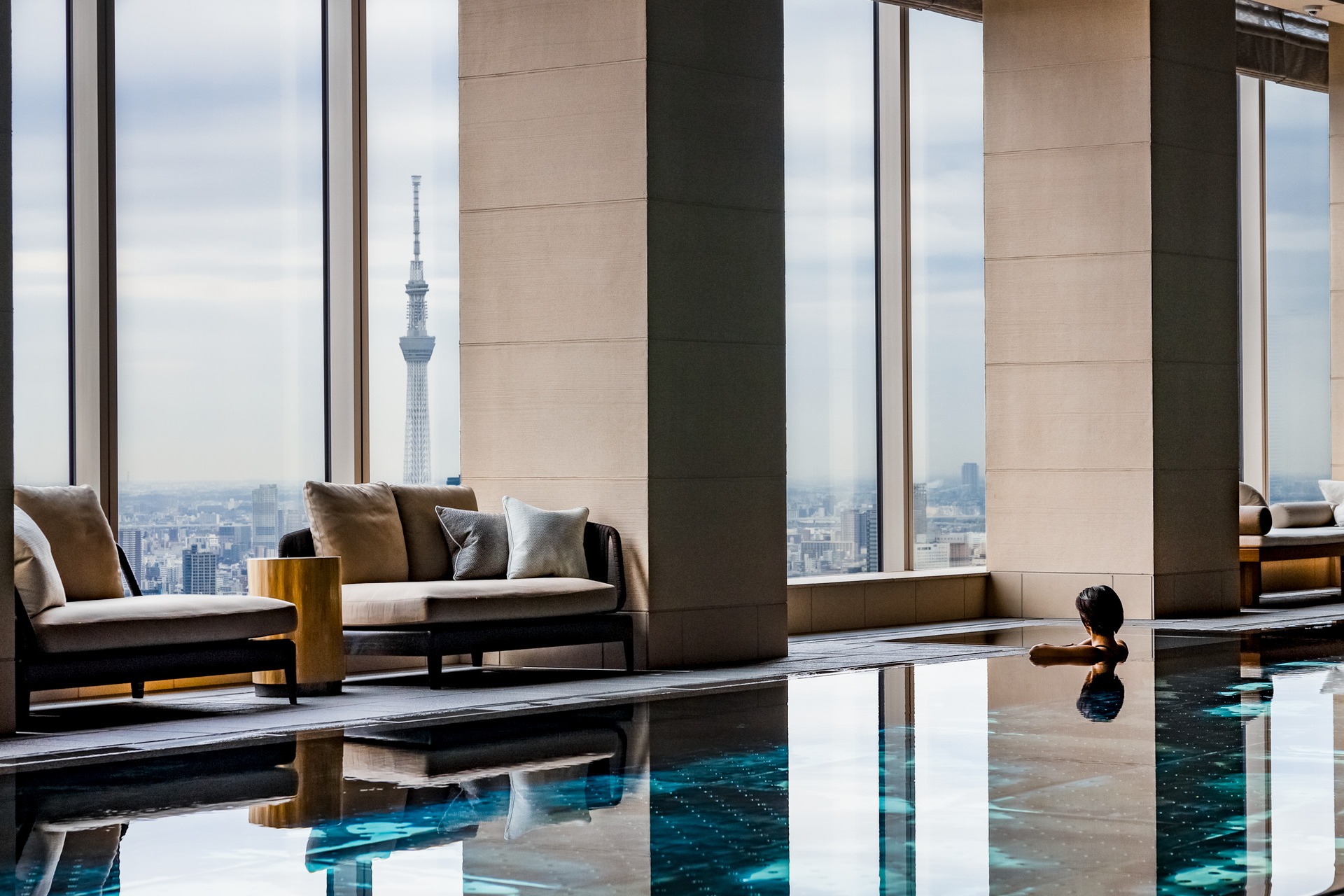
Image courtesy of Four Seasons Hotel Otemachi
What to do in Chiyoda & Otemachi
Stroll around the perimeter of the Imperial Palace, whose gardens and moat make for an especially pleasant walk, and people watch in the palace’s accompanying park. Search for treasures at the outdoor Oedo Antique Market, which operates every first and third Sunday of the month.
Where to eat in Chiyoda & Otemachi
Start the day off with single-origin brew at the hip, aesthetically pleasing Glitch Coffee Roasters. The evening calls for a taste of fine dining. Family-style Italian food is prepared in an open kitchen at the elegant Pigneto, in the new Four Seasons. On a clear day, you’ll dine with views of Mt. Fuji. Another Four Seasons must is the Michelin-Starred est, where local Japanese ingredients are treated to refined French technique. Out in town, try Sumibi Yakiniku Nakahara for charcoal-grilled meats prepared tableside.
This may be information overload, but that's where I come in. Above is just a taste of all that Tokyo offers. Connect with me for a tailored trip. I'll work to understand your vibe and what you're after, and design your dream Tokyo getaway, complete with VIP perks and priority status at the city's best hotels.
